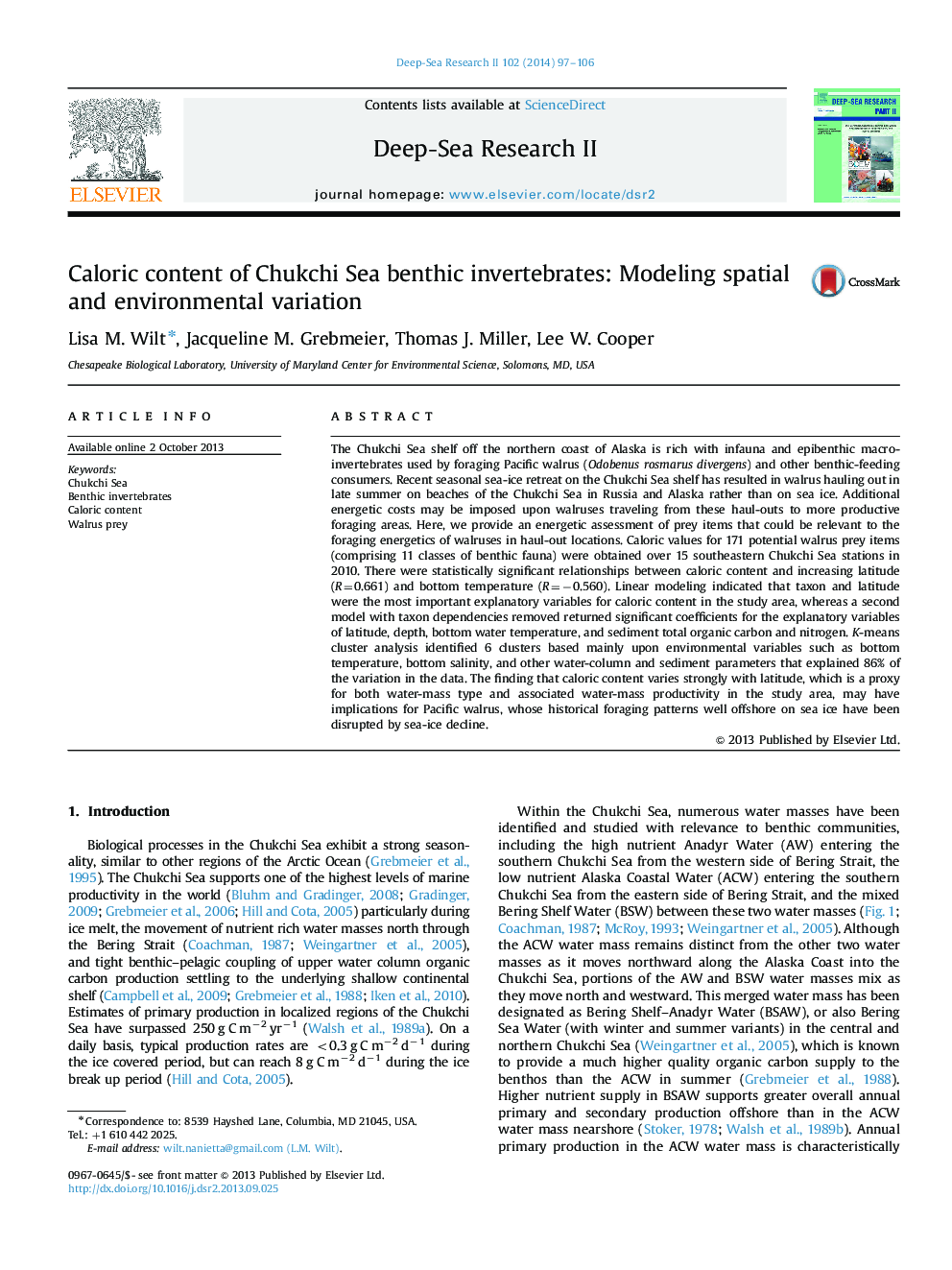| کد مقاله | کد نشریه | سال انتشار | مقاله انگلیسی | نسخه تمام متن |
|---|---|---|---|---|
| 4536416 | 1626438 | 2014 | 10 صفحه PDF | دانلود رایگان |
The Chukchi Sea shelf off the northern coast of Alaska is rich with infauna and epibenthic macroinvertebrates used by foraging Pacific walrus (Odobenus rosmarus divergens) and other benthic-feeding consumers. Recent seasonal sea-ice retreat on the Chukchi Sea shelf has resulted in walrus hauling out in late summer on beaches of the Chukchi Sea in Russia and Alaska rather than on sea ice. Additional energetic costs may be imposed upon walruses traveling from these haul-outs to more productive foraging areas. Here, we provide an energetic assessment of prey items that could be relevant to the foraging energetics of walruses in haul-out locations. Caloric values for 171 potential walrus prey items (comprising 11 classes of benthic fauna) were obtained over 15 southeastern Chukchi Sea stations in 2010. There were statistically significant relationships between caloric content and increasing latitude (R=0.661) and bottom temperature (R=−0.560). Linear modeling indicated that taxon and latitude were the most important explanatory variables for caloric content in the study area, whereas a second model with taxon dependencies removed returned significant coefficients for the explanatory variables of latitude, depth, bottom water temperature, and sediment total organic carbon and nitrogen. K-means cluster analysis identified 6 clusters based mainly upon environmental variables such as bottom temperature, bottom salinity, and other water-column and sediment parameters that explained 86% of the variation in the data. The finding that caloric content varies strongly with latitude, which is a proxy for both water-mass type and associated water-mass productivity in the study area, may have implications for Pacific walrus, whose historical foraging patterns well offshore on sea ice have been disrupted by sea-ice decline.
Journal: Deep Sea Research Part II: Topical Studies in Oceanography - Volume 102, April 2014, Pages 97–106
